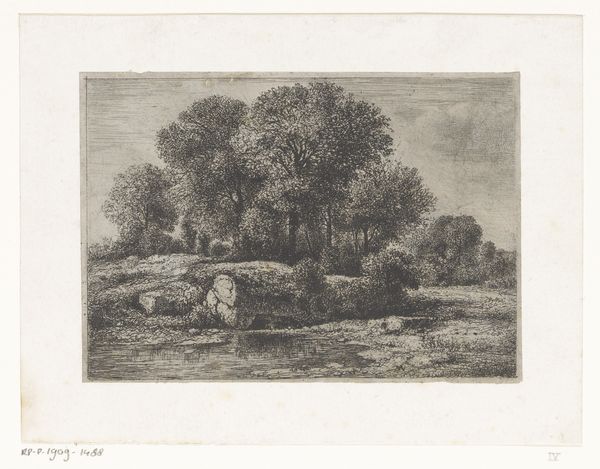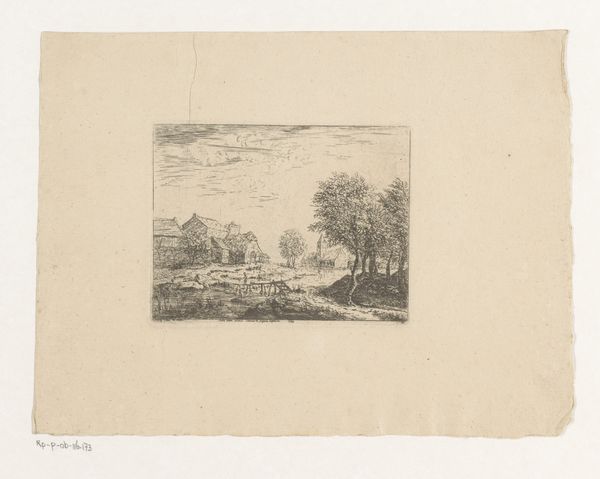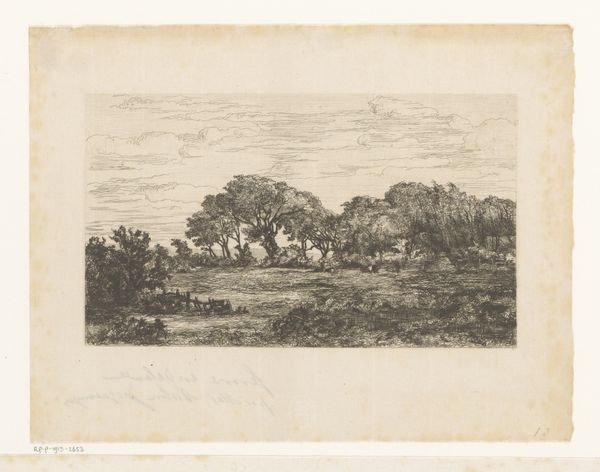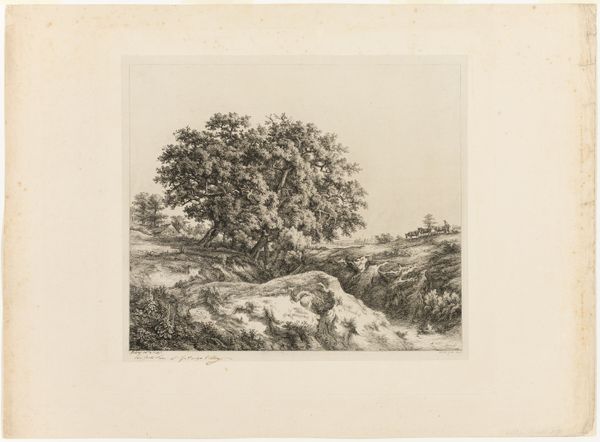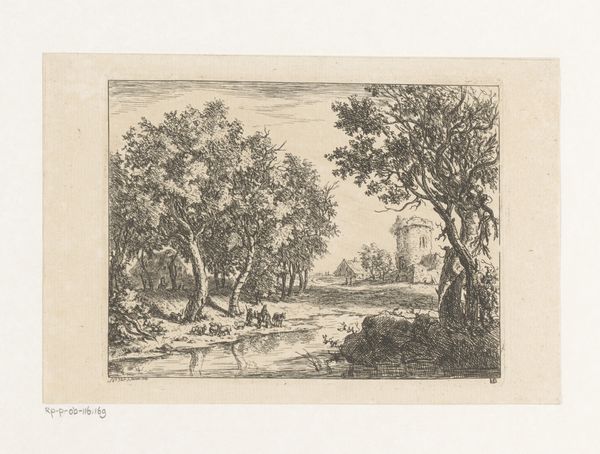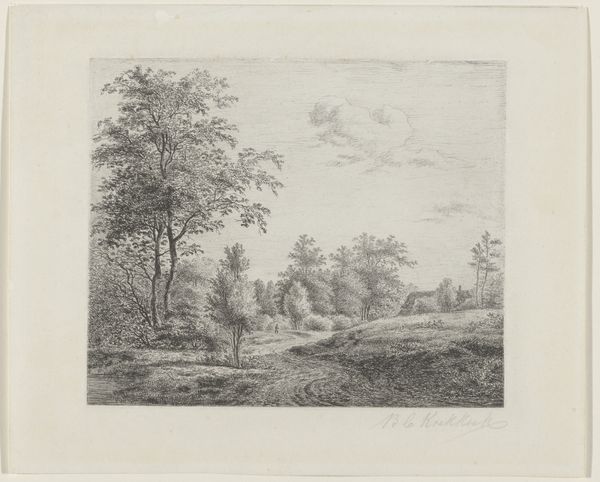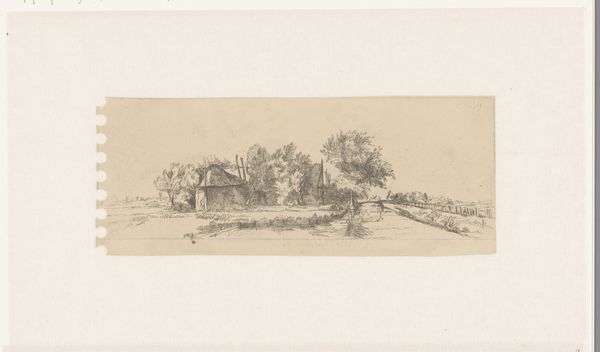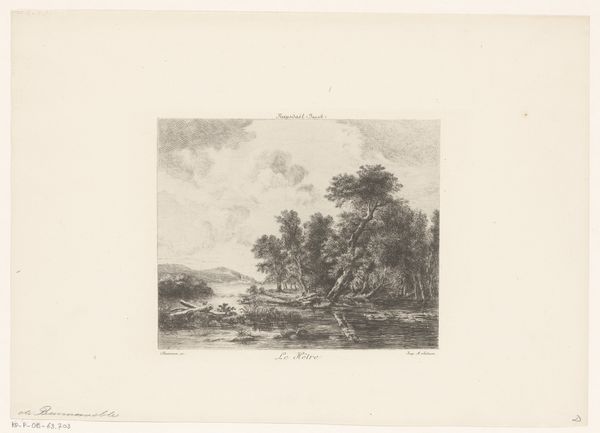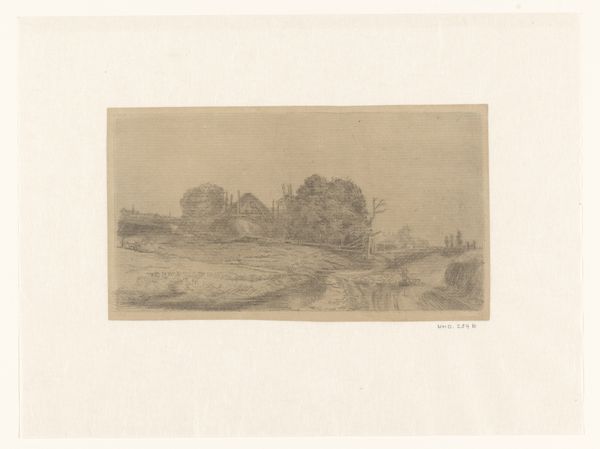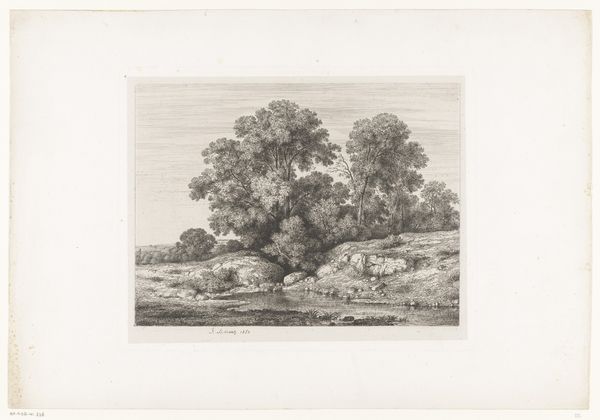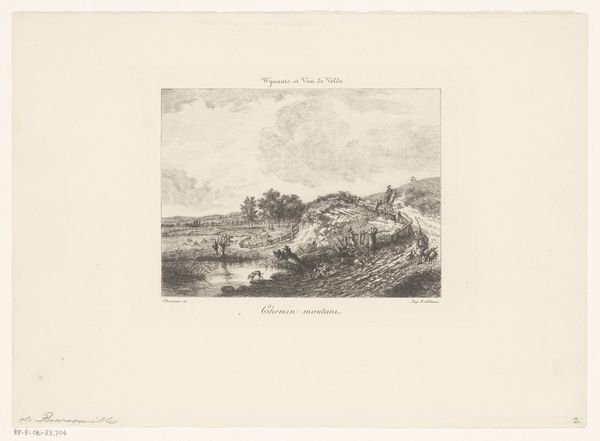
drawing, print, etching, paper, pencil
#
pencil drawn
#
tree
#
drawing
#
light pencil work
#
natural tone
#
ink paper printed
# print
#
etching
#
pencil sketch
#
landscape
#
paper
#
form
#
romanticism
#
pencil
#
line
#
pencil work
#
realism
Dimensions: height 174 mm, width 233 mm, height 175 mm, width 250 mm
Copyright: Rijks Museum: Open Domain
Curator: This is "Glooiend landschap met een beek," or "Rolling Landscape with a Stream," an etching by Jean Alexis Achard, created sometime between 1817 and 1884. Editor: It's quiet, contemplative. The meticulous details, achieved with fine lines, feel like a captured memory or a peaceful dream. The way the mountains fade into the background... melancholic, almost. Curator: Achard was deeply embedded in the 19th-century artistic dialogues surrounding realism and Romanticism. We can examine how these movements negotiated notions of truth and the sublime in relation to depictions of nature. The seemingly objective portrayal of the landscape also implies social relationships to land and property. Editor: I am drawn to the symbolism of the trees, rooted and enduring, silent witnesses of time. The stream, a recurring motif, suggests the flow of life and change, mirroring personal and collective journeys through history. Curator: Exactly. Consider the composition and Achard’s technique. The etching employs detailed line work that could speak to the emerging scientific rationalism of the era, in dialogue with idealized depictions of rural life and nascent notions of environmentalism. Also, we should note, prints were key in disseminating ideas and reaching a broader audience at the time. Editor: Did that make it more democratic? Art accessible to all social classes and groups of people? Or perhaps did these landscapes cater to a certain class with colonial or imperial associations? Curator: Precisely! These idyllic visions also obscure social realities of land ownership, labor, and dispossession that become amplified when viewed through critical race and postcolonial theory. Editor: What an insightful juxtaposition of themes. Seeing the enduring power of nature’s symbolism interwoven with social commentary truly shifts my perspective. Thank you. Curator: Likewise. Situating this artwork in a historical, material, and intersectional context deepens my understanding and appreciation of 19th-century aesthetics.
Comments
No comments
Be the first to comment and join the conversation on the ultimate creative platform.
